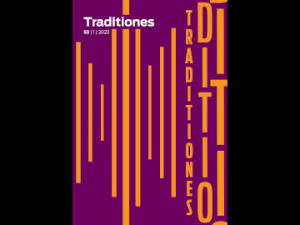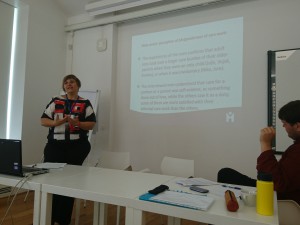Scientific articles on the topic of initmacy and gender
12. 1. 2021 | Gender

Majda Hrženjak has published two scientific articles related to the topic of intimacy and gender. In the article Multiple masculinities in primary caregiving situations: Degendering care and undoing masculinity (Anthropological Notebooks) she develops alternative interpretations of men’s practices of and attitudes about care, while in the article Sporty Boys and Fashion Girls: Manoeuvring Between Dominant Norms of Gender Identity (Thematic issue Teaching Feminism of the School Field journal) she analyses symbolic meanings and empirical effects of this equation on teenagers’ engendering.
At the intersection of the feminist ethic of care and critical studies of men and mas-culinities, the article Multiple masculinities in primary caregiving situations: Degendering care and undoing masculinity develops alternative interpretations of men’s practices of and attitudes about care in order to contribute to the loosening of gender dualisms in the perceptions and constructions of care. Empirical evidence collected in 23 indi-vidual interviews with men carers reveals that men in specific caring situations (in-tensive primary care) and in non-hegemonic social locations (according to class, age, ability and sexual orientation) resist dominant norms of masculinity to some extent and, in accordance with the feminist ethic of care, establish care as gender-neutral, complex, politically relevant and socially integrative disposition and activity.
The trigger for the article Sporty Boys and Fashion Girls: Manoeuvring Between Dominant Norms of Gender Identity was »Lévi-Straussian mythical formula« girls : boys = fashion : football, which came to the fore in the conversation with girls and boys aged 13 and 14 years. The article analyses how teenagers deploy clothing practices, strong attentiveness for their outfit and some other techniques of body self-regulation in order to negotiate social control and peer pressure related to the processes of self-construction of masculine and feminine identity. The analyses is focused on peculiarities of these processes in doing hegemonic or marginalized masculinities and traditional or alternative femininities. Comparison of boys’ and girls’ (in intersections with classed and ethnicised social locations) attitude to clothing and outfit demonstrates that both experience pressure of performing normative gender identity through their body, however, techniques of body self-regulation are different for boys and girls and for specific social locations. In the conclusion the author reflects the implications of teenagers’ doing gender through body and its outfit for pedagogical situation.




